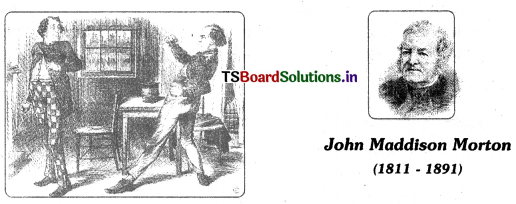Telangana TSBIE TS Inter 1st Year Economics Study Material 2nd Lesson వినియోగదారుని ప్రవర్తనా సిద్ధాంతాలు Textbook Questions and Answers.
TS Inter 1st Year Economics Study Material 2nd Lesson వినియోగదారుని ప్రవర్తనా సిద్ధాంతాలు
వ్యాసరూప సమాధాన ప్రశ్నలు:
ప్రశ్న 1.
క్షీణోపాంత ప్రయోజన సూత్రాన్ని వివరించి, పరిమితులను ప్రాధాన్యతను విశదీకరించండి.
జవాబు.
క్రమ క్షీణోపాంత ప్రయోజన సూత్రం మానవుని దైనందిన అనుభవం మీద ఆధారపడి ఉంటుంది. ప్రతి కోరికను ఒక కాల వ్యవధిలో పూర్తిగా సంతృప్తిపరచవచ్చుననే ప్రాతిపదికపై ఈ సూత్రం ఆధారపడి ఉంది. ఈ సూత్రాన్ని ప్రథమంగా 1854వ సంవత్సరంలో హెచ్. హెచ్. గాసెన్ ప్రతిపాదించాడు. దీనిని గాసెన్ ప్రథమ సూత్రంగా జీవన్స్ పేర్కొన్నాడు. మార్షల్ దీనిని అభివృద్ధిపరిచాడు.
“ఒక వ్యక్తి తనవద్దనున్న వస్తు రాశిని పెంచుతూ పోతే అదనంగా చేర్చిన యూనిట్ల నుండి లభించే అదనపు ప్రయోజనం క్రమంగా క్షీణిస్తుంది” అని క్షీణోపాంత ప్రయోజనాన్ని మార్షల్ నిర్వచించెను. ఈ సూత్రాన్ని కొన్ని ప్రమేయాలపై ఆధారపడి రూపొందించడం జరిగింది.
ప్రమేయాలు :
- సిద్ధాంతం కార్డినల్ ప్రయోజన విశ్లేషణపై ఆధారపడింది. అంటే ప్రయోజనాన్ని కొలవవచ్చును, పోల్చవచ్చును.
- వస్తువు యూనిట్లు తగుమాత్రంగా ఉండి, మరీ చిన్న యూనిట్లుగాను, మరీ పెద్ద యూనిట్లుగాను ఉండరాదు.
- వినియోగించే వస్తువు వివిధ యూనిట్లు సజాతీయంగా ఉండాలి. అనగా పరిమాణం, నాణ్యత, రుచి మొదలైన విషయాలలో ఏ వ్యత్యాసం ఉండరాదు.
- ఒక యూనిట్ వినియోగానికి, మరొక యూనిట్ వినియోగానికి మధ్య కాలవ్యవధి ఉండకూడదు.
- వినియోగదారుల అభిరుచులు, అలవాట్లలో మార్పు ఉండరాదు.
- వినియోగదారుల ఆదాయాలు మారకూడదు.
క్షీణోపాంత ప్రయోజన సూత్ర వివరణ :
ఈ సూత్రం వస్తురాశి పరిమాణానికి తృప్తి లేదా ప్రయోజనానికి మధ్యగల సంబంధాన్ని వివరిస్తుంది. ఈ సూత్రం ప్రకారం ఒక వినియోగదారుడు తన వద్ద ఉన్న వస్తురాశిని పెంచుతూ పోతుంటే అదనపు యూనిట్వల్ల లభించే అదనపు లేదా ఉపాంత ప్రయోజనం క్షీణిస్తుంది. ఈ సూత్రాన్ని ఈ క్రింది పట్టిక ద్వారా చూపించటం జరిగింది.
| ఆపిల్ పండ్ల సంఖ్య | మొత్తం ప్రయోజనం | ఉపాంత ప్రయోజనం |
| 1 | 30 | 30 |
| 2 | 50 | 20 |
| 3 | 65 | 15 |
| 4 | 75 | 10 |
| 5 | 80 | 5 |
| 6 | 82 | 2 |
| 7 | 82 | 0 |
| 8 | 80 | – 2 |
పట్టిక ప్రకారం ప్రతి అదనపు ఆపిల్ వల్ల లభించే ఉపాంత ప్రయోజనం క్షీణిస్తుంది. అంటే మొత్తం ప్రయోజనం తగ్గుతున్న రేటులో పెరగటం గమనించవచ్చు. 6వ ఆపిల్ వల్ల మొత్తం ప్రయోజనం 82 యుటిల్స్, ఉపాంత ప్రయోజనం 2 యుటిల్స్, 7వ ఆపిల్ వినియోగం వల్ల మొత్తం ప్రయోజనంలో మార్పు లేదు.

అంటే మొత్తం ప్రయోజనం గరిష్టంగా ఉంది. ఉపాంత ప్రయోజనం శూన్యం 7, 8 ఆపిల్ పండ్ల నుండి మొత్తం ప్రయోజనం క్షీణించి, ఉపాంత ప్రయోజనం ఋణాత్మకమైనది. మొత్తం ప్రయోజనానికి, ఉపాంత ప్రయోజనానికి మధ్య సంబంధం ఈ క్రింది విధంగా ఉంటుంది.
- మొత్తం ప్రయోజనం తగ్గుతున్న రేటులో పెరిగినప్పుడు ఉపాంత ప్రయోజనం తగ్గుతుంది.
- మొత్తం ప్రయోజనం గరిష్టమైనపుడు ఉపాంత ప్రయోజనం శూన్యమవుతుంది.
- మొత్తం ప్రయోజనం తగ్గితే ఉపాంత ప్రయోజనం ఋణాత్మకమవుతుంది. దీనిని ఈ క్రింది రేఖాపటం ద్వారా వివరించవచ్చు.
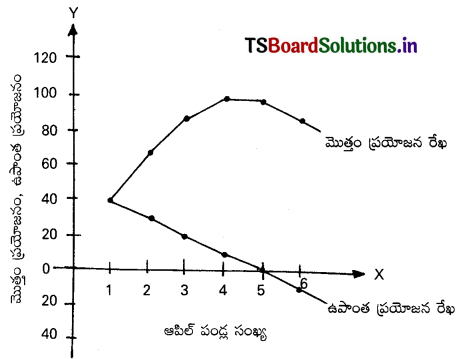
పట్టికను రేఖాపటంలో T.U.C. మొత్తం ప్రయోజన రేఖ M.U.C. ఉపాంత ప్రయోజన రేఖ. X – అక్షముపై ఆపిల్ పండ్ల సంఖ్యను, Y – అక్షముపై మొత్తం ప్రయోజనం, ఉపాంత ప్రయోజనం చూపించాము. వినియోగదారునికి ‘O’ యూనిట్ వద్ద మొత్తం ప్రయోజనం ‘0’ ఆపిల్స్ వినియోగం పెంచుతూ పోయిన కొద్దీ మొత్తం ప్రయోజనం తగ్గుతున్న రేటులో పెరిగింది.
T.U.C. ఇదే అంశాన్ని స్పష్టం చేస్తోంది. M.U.C. క్రిందికి వాలుతున్నది. T.U.C. 7వ పండు వద్ద గరిష్టంగా ఉంది. M.U.C. X – అక్షాన్ని తాకి శూన్యమైంది. వినియోగదారుడు 7వ, 8వ పండ్లను వినియోగించటం వల్ల మొత్తం ప్రయోజనం క్షీణించింది. ఉపాంత ప్రయోజనం ఋణాత్మకమైంది.
క్షీణోపాంత ప్రయోజన సిద్ధాంతం, మినహాయింపులు :
కొన్ని పరిస్థితులలో అదనపు యూనిట్ల నుంచి వచ్చే ప్రయోజనం క్రమంగా క్షీణించకపోవచ్చు. వీటినే ఈ సూత్రానికి మినహాయింపులుగా చెప్పటం జరుగుతుంది. అవి :
- అపూర్వ వస్తువుల విషయంలో ఈ సూత్రం వర్తించదు.
ఉదా : నాణేలు, కళాత్మక వస్తువులు, తపాలా బిళ్ళలు. - సామాజిక వస్తువుల వినియోగంలో ఈ సూత్రం వర్తించదు.
ఉదా : ఒక పట్టణంలో టెలిఫోన్ల సంఖ్య పెరిగితే, టెలిఫోను ఉపయోగించటం వల్ల కలిగే ప్రయోజనం కూడా పెరుగుతుంది. - మత్తు పదార్థాల విషయంలో ఈ సూత్రం వర్తించదు.
- ద్రవ్యం విషయంలో ఈ సూత్రం వర్తించదని కొందరి అభిప్రాయం.
ప్రాధాన్యత :
క్షీణోపాంత ప్రయోజన సూత్రానికున్న ప్రాముఖ్యతను క్రింది విధంగా వివరించవచ్చు.
- క్షీణోపాంత ప్రయోజన సూత్రం అనేది ప్రాథమిక వినియోగ సిద్ధాంతం. ఇది డిమాండ్ సూత్రానికి, సమోపాంత ప్రయోజన సూత్రానికి ఆధారం.
- ఈ సూత్రాన్ని దృష్టిలో ఉంచుకొని ఉత్పత్తిదారులు తమ వస్తువుల డిజైన్ ను, విధానాన్ని, ప్యాకింగ్ను మారుస్తుంటారు.
- సప్లయ్ పెరిగితే వస్తువు ధర తగ్గుతుందనే విలువ సిద్ధాంతాన్ని ఇది వివరిస్తుంది. ఎందుకంటే వస్తువు నిల్వలు పెరిగితే దాని ఉపాంత ప్రయోజనం క్షీణిస్తుంది.
- ఈ సూత్రం ద్వారా వత్రోదక వైపరీత్యాన్ని (water-diamond paradox) వివరించవచ్చు. వజ్రాలకు సాపేక్ష కొరత ఉన్నందున మారకపు విలువ ఎక్కువగా ఉంటుంది. అయితే ఉపయోగితా విలువ తక్కువ. అలాగే నీరు సాపేక్షంగా అధిక మొత్తంలో లభిస్తుంది. కాబట్టి తక్కువ మారకపు విలువను, అధిక ఉపయోగితా విలువను కలిగి ఉంటుంది.
- పన్నుల విధానాలను రూపొందించేటప్పుడు ప్రభుత్వానికి ఈ సూత్రం ఉపయోగపడుతుంది. క్షీణోపాంత ప్రయోజన సూత్రంపైననే పురోగామి పన్నుల (progressive taxation) విధానం ఆధారపడింది. ఆదాయ, సంపద పునః పంపిణీ విధానాలలో బీద ప్రజలకు అనుకూలంగా ఈ సూత్రం చాలా ఉపయోగపడుతుంది.

ప్రశ్న 2.
సమోపాంత ప్రయోజన సూత్రం సహాయంతో వినియోగదారుని సమతౌల్యాన్ని చర్చించండి.
జవాబు.
వినియోగదారుని సమతౌల్యాన్ని వివరించే సూత్రమే సమోపాంత ప్రయోజన సూత్రము. వినియోగదారుడు గరిష్ట సంతృప్తిని పొందడానికి తన దగ్గర ఉన్న పరిమిత ఆదాయాన్ని వివిధ వస్తువులపై ఏ విధంగా ఉపయోగిస్తాడో ఈ సూత్రం వివరిస్తుంది.
సమోపాంత ప్రయోజన సూత్రం ప్రకారం ఒక వినియోగదారుడు తన దగ్గరున్న ద్రవ్యాన్ని వివిధ వస్తువులపై వాటి ఉపాంత ప్రయోజనాలు సమానమయ్యే వరకు ఒకదానికి బదులుగా మరొకటి ప్రతిస్థాపన చేస్తాడు.
ఈ ప్రతిస్థాపన గరిష్ట సంతృప్తిని సాధించేవరకు సాగుతుంది. ఉపాంత ప్రయోజనాలు సమానమైనప్పుడు మొత్తం ప్రయోజనం గరిష్టంగా ఉంటుంది. మొత్తం ప్రయోజనం గరిష్టంగా ఉన్నప్పుడు వినియోగదారుడు సమతౌల్యంలో ఉంటాడు.
ఈ సూత్రాన్ని ప్రప్రధమంగా 1854వ సంవత్సరంలో హెచ్.హెచ్. గాసెన్ ప్రతిపాదించాడు. దీనిని గాసెన్ ద్వితీయ సూత్రంగా జీవన్స్ పేర్నొన్నాడు. దీనిని మార్షల్ అభివృద్ధిపరిచాడు.
“ఒక వ్యక్తి దగ్గర ఉన్న ఒక వస్తువుకు అనేక ఉపయోగాలున్నప్పుడు అతడు ప్రతి ఉపయోగం నుండి వచ్చే ఉపాంత ప్రయోజనం సమానంగా ఉండేటట్లు ఆ వస్తువును వినియోగించడం జరుగుతుంది” అని మార్షల్ ఈ సూత్రాన్ని నిర్వచించెను.
సూత్రం వివరణ :
ఉదా : ఒక వ్యక్తి వద్ద ఉన్న వస్తువు పరిమిత ద్రవ్యం ఐదు రూపాయలు అనుకుందాం. ఆ పరిమిత ద్రవ్యాన్ని x – y అనే వస్తువులపై ఖర్చు చేయటం ద్వారా ఏ విధంగా సమతౌల్యంలో ఉన్నాడో ఈ క్రింది పట్టిక ద్వారా పరిశీలించవచ్చును.
x – y ధరలు ఒక యూనిట్ వస్తువు ఒక రూపాయిగా భావించాలి. ప్రతి రూపాయికి లభించే ఉపాంత ప్రయోజనాలను పట్టికలో పరిశీలించవచ్చును.
ద్రవ్య పరిమాణం (రూపాయలలో) | X – వస్తువు ఉపాంత ప్రయోజనం (యుటిల్స్) | y – వస్తువు ఉపాంత ప్రయోజనం (యుటిల్స్) |
| 1 | 25 (1వ) | 21 (2వ) |
| 2 | 20 (3వ) | 15 (4వ) |
| 3 | 15 (5వ) | 10 |
| 4 | 10 | 5 |
| 5 | 5 | 1 |
బ్రాకెట్లలో చూపిన అంకెలు వినియోగదారుడు 5 రూపాయలను ఏ విధంగా ఖర్చు చేశాడో తెలియజేయును. పట్టికననుసరించి x, y వస్తువుల ఉపాంత ప్రయోజన వస్తు వినియోగం పెరుగుతున్న కొద్దీ క్షీణిస్తుంది. ఒకటో రూపాయి వల్ల వచ్చే ఉపాంత ప్రయోజనం y వస్తువు కంటే X వస్తువు వల్ల ఎక్కువగా ఉంది.
అందువల్ల మొదటి రూపాయితో X వస్తువును కొనుగోలు చేస్తాడు. అదే విధంగా 2వ రూపాయిని × మీద వినియోగిస్తే ఉపాంత ప్రయోజనం 20 యుటిల్స్. అదే 2వ రూపాయిని y మీద వినియోగిస్తే ఉపాంత ప్రయోజనం 21 యుటిల్స్. కనుక 2వ రూపాయిని y వస్తువుపై ఖర్చు చేస్తాడు.
3వ రూపాయిని y వస్తువు మీద ఖర్చు చేస్తే, 15 యుటిల్స్ ఉపాంత ప్రయోజనము. అదే 3వ రూపాయిని X వస్తువుపై ఖర్చు చేస్తే ఉపాంత ప్రయోజనం 20 యుటిల్స్ కనుక 3వ రూపాయితో x వస్తువు 2వ యూనిట్ను కొనుగోలు చేస్తాడు. 4వ రూపాయితో y ని కొనుగోలు చేసినా ఉపాంత ప్రయోజనం 15 యుటిల్స్.
5వ రూపాయిని x వస్తువు 3వ యూనిట్పై ఖర్చు చేస్తే ఉపాంత ప్రయోజనం 15 యుటిల్స్. 5 రూపాయలను X వస్తువుపై ఖర్చు చేస్తే 75 యుటిల్స్ ప్రయోజనం వస్తుంది.
5 రూపాయలను y వస్తువుపై ఖర్చు చేస్తే మొత్తం ప్రయోజనం 52 యుటిల్స్. కాని పైన పేర్కొన్న విధంగా ఖర్చు చేస్తే మొత్తం ప్రయోజనం 96 యుటిల్స్ [25 + 21 + 20 + 15 + 15 = 96]. వినియోగదారుడు ఈ విధంగా 3 యూనిట్ల xని, 2 యూనిట్ల yని కొనుగోలు చేసినప్పుడు మాత్రమే వినియోగదారునికి గరిష్ట సంతృప్తి వస్తుంది.
అప్పుడే తాను ఖర్చు చేసిన చివరి రూపాయివల్ల రెండు వస్తువులకు ఒకే ప్రయోజనం వస్తుంది. మరే రకంగా ఖర్చు చేసినా ప్రయోజనం గరిష్టంగా ఉండదు. దీనిని పటము ద్వారా తెలియజేయవచ్చు.
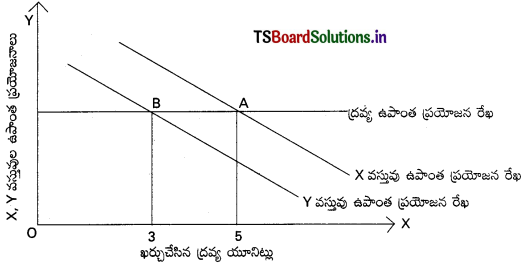
పై రేఖాపటములో X – అక్షముపై ద్రవ్య పరిమాణము, Y – అక్షముపై ఒక రూపాయి వల్ల వచ్చే X, Y ల ఉపాంత ప్రయోజనం సూచించటం జరిగింది. XY రేఖ X వస్తువు ప్రయోజన రేఖ (MUC], YY రేఖ Y వస్తువు ఉపాంత ప్రయోజన రేఖ [MUC]. X వస్తువుపై 3వ రూపాయి 15 యుటిల్స్ ప్రయోజనం ఇస్తుంది. Y వస్తువుపై 2వ రూపాయి 15 యుటిల్స్ ప్రయోజనం ఇస్తుంది.
వినియోగదారుడు సమతౌల్య స్థితిని నిర్ణయించుటకు ఈ క్రింది నిబంధనను సంతృప్తిపరచవలెను.
X వస్తువు ఉపాంత ప్రయోజనం / X వస్తువు ధర = Y వస్తువు ఉపాంత ప్రయోజనం / Y వస్తువు ధర = ……………. n
X ఉపాంత ప్రయోజనం = Y ఉపాంత ప్రయోజనం.

ప్రమేయాలు :
సమోపాంత ప్రయోజన సూత్రం కింది ప్రమేయాలపై ఆధారపడింది.
- ప్రయోజనాన్ని సంఖ్యా రూపంలో కొలవటానికి వీలు ఉంటుంది.
- వినియోగదారుడు హేతుబద్ధంగా వ్యవహరిస్తాడు. అంటే సంతృప్తిని గరిష్ఠం చేసుకొని సమతౌల్యం పొందడానికి ప్రయత్నిస్తాడు.
- ద్రవ్య ఉపాంత ప్రయోజనం స్థిరంగా ఉంటుంది.
- వినియోగదారుని ఆదాయం స్థిరంగా ఉంటుంది, ఆదాయాన్ని పూర్తిగా వస్తువుల కోసం ఖర్చు పెడతాడు.
- వస్తువుల ధరలు స్థిరంగా ఉంటాయి.
- వస్తువుల నుంచి పొందే ఉపాంత ప్రయోజనాలు స్వతంత్రమైనవి.
పరిమితులు :
సమోపాంత ప్రయోజన సూత్రం కింద వివరించిన కొన్ని పరిమితులకు లోబడి పనిచేస్తుంది.
- వినియోగదారుడు హేతుబద్దంగా ప్రవర్తిస్తాడనే ప్రమేయం పైన ఆధారపడింది. నిజ జీవితంలో హేతుబద్ద ప్రవర్తనకు అనేక ఆటంకాలు ఉంటాయి.
- వస్తువులన్నీ విభాజ్యమైతేనే ఈ సూత్రం పనిచేస్తుంది. వస్తువులు పెద్దవిగా ఉండి, అవిభాజ్యంగా ఉంటే వీటిపై ఖర్చు చేసిన ద్రవ్యం యూనిట్ల ఉపాంత ప్రయోజనాలను సమానం చేయలేం.
- కొన్ని వస్తువులు లభించనప్పుడు తన వ్యయం ద్వారా వినియోగదారుడు సంతృప్తిని గరిష్ఠం చేసుకోవడాన్ని ఇది నిరోధిస్తుంది. అందుచేత ఈ సూత్రం పనిచేయదు.
- మార్కెట్లో వస్తువుల ధరలు తరచుగా మారుతుంటాయి. ఫలితంగా వీటి ప్రయోజనాలు కూడా వివిధ సమయాల్లో మారుతుంటాయి. ఈ సూత్రం పనిచేయకుండా ఇలాంటి పరిస్థితి నిరోధిస్తుంది.
- పూరక వస్తువుల విషయంలో గరిష్ఠ సంతృప్తి సూత్రం పనిచేయదు.
- వినియోగదారుడు వస్తువులను కొని, ఉపయోగించడానికి ఒక నిర్ణీత సమయం అంటూ లేదు.
- కార్డినల్ ప్రయోజన పద్ధతి, ద్రవ్య ఉపాంత ప్రయోజనం స్థిరం అనే ప్రమేయాలు వాస్తవం కాదు. వీటికి ఎలాంటి విలువ లేదు..
- వినియోగదారునికి సంపూర్ణ పరిజ్ఞానం ఉందనే ప్రమేయం సరియైనది కాదు.
సమోపాంత ప్రయోజన సూత్రం ప్రాధాన్యత :
అర్థశాస్త్రంలో సమోపాంత ప్రయోజన సూత్రానికి అధిక ప్రాధాన్యత ఉంది.
1. వినియోగదారుని వ్యయానికి ఆధారం :
ఈ సూత్రాన్ని ఆధారంగా చేసుకొనే ప్రతి వ్యక్తి తన వినియోగ తీరును నిర్ణయించుకుంటాడు.
2. పొదుపుకు, వినియోగానికి ఆధారం :
వివేకం ఉన్న వినియోగదారుడు తన పరిమిత వనరులను ప్రస్తుత, భవిష్యత్తు వినియోగాల మధ్య వాటి ఉపాంత ప్రయోజనాలు సమానంగా ఉండేలాగా పంపిణీ చేస్తాడు. ఈ విధంగా సూత్రం మనను నడుపుతుంది.
3. ఉత్పత్తి రంగం :
వ్యాపారస్తునికి, ఉత్పత్తిదారునికి ఈ సూత్రం ప్రత్యేక ప్రాధాన్యత కలిగి ఉంటుంది. ఉత్పత్తిదారుడు బాగా పొదుపుతో కూడుకున్న ఉత్పత్తి కారకాల సముదాయంను ఎన్నుకొంటాడు. అందువల్ల ఉత్పత్తి కారకాల ఉపాంత ఉత్పాదకతలు సమానం అయ్యే విధంగా ఒక కారకానికి బదులుగా మరొక కారకాన్ని ప్రతిస్థాపన చేసుకుంటాడు.
4. మారకంలో ఉపయోగం :
ఈ సూత్రం మనం చేసుకొనే అన్ని మారకాలలో పనిచేస్తుంది. ఒక దానికి బదులు మరొక దానిని ప్రతిస్థాపన చేసుకోవడమే మారకం.
5. ధర నిర్ణయం :
విలువను, ధరను నిర్ణయించడంలో ఈ సూత్రానికి అధిక ప్రాధాన్యత ఉంది.
6. ప్రభుత్వ విత్తం :
ఈ సూత్రాన్ని బట్టి ప్రభుత్వం వ్యయాన్ని చేస్తుంది. పన్ను చెల్లింపుదారులకు, ఉపాంత త్యాగాలు సమానంగా ఉండే రీతిలో పన్నులు విధించబడతాయి.
ఈ విధంగా అర్థశాస్త్ర సిద్ధాంతంలోని అన్ని విభాగాలకు ప్రతిస్థాపన సూత్రం వర్తిస్తుంది.

ప్రశ్న 3.
ఉదాసీన వక్ర రేఖ విశ్లేషణ ద్వారా వినియోగదారుని సమతౌల్యాన్ని విపులీకరించండి.
జవాబు.
ఒక వినియోగదారుని అభిరుచులు, అలవాట్లు రెండు వస్తువుల ధరలు నిలకడగా ఉండి పరిమిత ఆదాయ వనరులతో వీలైనంతగా రెండు వస్తువులను గరిష్టంగా కొనుగోలు చేయగలిగినట్లయితే వినియోగదారుడు సమతౌల్యస్థితికి చేరుకున్నాడని చెప్పవచ్చు.
ఈ క్రింది ప్రమేయాలను ఆధారంగా చేసుకొని ఉదాసీనత వక్రరేఖల సహాయంతో వినియోగదారుని సమతౌల్య స్థితిని వివరించవచ్చు.
- వినియోగదారుడు హేతుబద్ధంగా వ్యవహరిస్తాడు.
- వినియోగదారుని ద్రవ్య ఆదాయంలో ఎలాంటి మార్పులు ఉండవు.
- వినియోగదారుడు కొనుగోలు చేయాలనుకునే వస్తువుల ధరలు మారవు.
- వినియోగదారుని అభిరుచులు ఉదాసీనత వక్రరేఖలు తెలుపుతాయి.
వినియోగదారుని సమతౌల్యం :
వినియోగదారు పొందగోరే వస్తు సముదాయాలు, పొందగలిగిన వస్తు సముదాయాలు సమానంగా ఉన్నప్పుడు సమతౌల్యంలో ఉంటాడు. అంటే ఉదాసీనతా వక్రరేఖ, బడ్జెట్ రేఖకు స్పర్శ రేఖగా ఉన్నప్పుడు వినియోగదారు గరిష్ట సంతృప్తిని పొందుతూ సమతౌల్యంలో ఉంటాడు.
ఇలాంటి పరిస్థితులలో ఉదాసీనత వక్రరేఖ వాలు, బడ్జెట్రెఖ వాలు సమానంగా ఉంటాయి. వినియోగదారుని సమతౌల్యానికి ముఖ్యమైన నిబంధన
\(\mathrm{MRS}_{\mathrm{xy}}=\frac{\mathrm{P}_{\mathrm{x}}}{\mathrm{P}_{\mathrm{y}}}\)
వినియోగదారు సమతౌల్యాన్ని ఈ క్రింది రేఖాపటం ద్వారా వివరించవచ్చు.
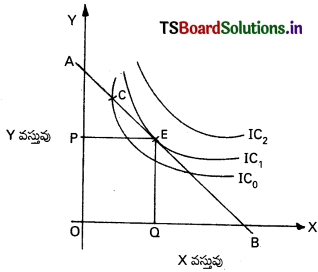
పై రేఖాపటంలో AB బడ్జెట్ రేఖ. IC, IC, IC, వివిధ ఉదాసీనత వక్రరేఖలు. IC, రేఖ AB బడ్జెట్ రేఖను C, D బిందువుల వద్ద ఖండిస్తుంది. అందువల్ల వినియోగదారు C వద్ద లేదా D వద్ద సమతౌల్యంలో ఉండడు. AB బడ్జెట్ రేఖ IC రేఖను ఖండిస్తుంది. అంటే ఇంకా వినియోగదారుడు అధిక సంతృప్తి స్థాయిని పొందటానికి వీలు ఉంటుంది. ‘E’ బిందువు వద్ద IC, రేఖ, AB బడ్జెట్ రేఖకు స్పర్శరేఖగా ఉంది.
అందువల్ల ‘E’ బిందువు వద్ద IC రేఖవాలు, బడ్జెట్ రేఖ వాలు సమానం. ఈ పరిస్థితిలో MRS = P./Py. అందువల్ల వినియోగదారుడు ‘E’ బిందువు వద్ద 0Q ‘X’ వస్తువును, OP పరిమాణంలో “Y వస్తువును కొనుగోలు చేస్తూ IC, పై గరిష్ట సంతృప్తిని పొందుతూ సమతౌల్యంలో ఉంటాడు. IC, అతని ఆదాయం కన్నా ఎక్కువ రేఖ. అందువల్ల వినియోగదారుడు IC, రేఖ పైననే ‘E’ బిందువు వద్ద సమతౌల్యంలో ఉంటాడు.

స్వల్ప సమాధాన ప్రశ్నలు:
ప్రశ్న 1.
ప్రయోజన విశ్లేషణ భావనను వివరించండి. ఇందులోని లోపాలు ఏమిటి ?
జవాబు.
ప్రయోజన భావనను ఆర్థిక తత్వశాస్త్రంలో జీవాన్స్ 1871లో ప్రవేశపెట్టాడు. సాధారణ పరిభాషలో వస్తువు లేదా సేవకు గల “కోరికను సంతృప్తి పరిచగలిగే శక్తిని ప్రయోజనం” అంటాం. కాని అర్థశాస్త్ర పరిభాషలో ప్రయోజనం ఒక మానసిక భావన. ప్రయోజనం అంటే ఒక వస్తువును వినియోగిస్తున్నప్పుడు వినియోగదారుడు పొందే సంతృప్తి. ఉపయోగంతో ప్రయోజనానికి ఎలాంటి సంబంధం లేదు.
ప్రయోజనం, ఉపయోగం రెండూ వేరు. ఒక వస్తువు మానవుని కోరికను తీర్చవచ్చు కాని అది ఉపయోగపడకపోవచ్చు. ఉదాహరణకు తాగుబోతు ఆరోగ్యానికి సారాయి హానికరం. కాని అతని కోరికను సంతృప్తి పరుస్తుంది. ఒక వస్తువు ఉపయోగకరమైనను, కాకున్నను అది మానవుని కోరికను సంతృప్తి పరిస్తే దానికి ప్రయోజనం ఉందని అంటారు.
ప్రయోజన విశ్లేషణ లోపాలు :
ప్రయోజన విశ్లేషణలో ఉన్న ప్రధాన పరిమితులను కింద తెలపడం జరిగింది.
- కార్డినల్ పద్ధతిలో ప్రయోజనాన్ని కొలవడం సాధ్యం కాదు.
- హేతుబద్ద వినియోగదారుడనే ప్రమేయం సరియైనది కాదు.
- ప్రయోజనాలు స్వతంత్రం అనేది తప్పు. ఒక వస్తువు ప్రయోజనం ఇతర వస్తువుల పైన కూడా ఆధారపడుతుంది.
- ద్రవ్య ఉపాంత ప్రయోజనం స్థిరం అనే ప్రమేయం తప్పు,
- ఏక వస్తు నమూనా అవాస్తవికం.
- ఆదాయ, ధర, ప్రతిస్థాపనా ప్రభావాలను సరిగా వివరించడం లేదు.
- అవిభాజ్య వస్తువులకున్న డిమాండ్ను ఈ విశ్లేషణ వివరించక ఉపేక్షించింది.

ప్రశ్న 2.
కార్డినల్ ప్రయోజనం, ఆర్డినల్ ప్రయోజనం, మొత్తం ప్రయోజనం, ఉపాంత ప్రయోజనం అను భావనలను వివరించండి.
జవాబు.
ప్రయోజన భావనను ఆర్థిక తత్వశాస్త్రంలో జీవాన్స్ 1871లో ప్రవేశపెట్టాడు. సాధారణ పరిభాషలో వస్తువు లేదా సేవకు గల “కోరికను సంతృప్తి పరచగలిగే శక్తిని ప్రయోజనం” అంటాం. కాని అర్థశాస్త్ర పరిభాషలో ప్రయోజనం ఒక మానసిక భావన. ప్రయోజనం అంటే ఒక వస్తువును వినియోగిస్తున్నప్పుడు వినియోగదారుడు పొందే సంతృప్తి. ఉపయోగంతో ప్రయోజనానికి ఎలాంటి సంబంధం లేదు.
ప్రయోజనం, ఉపయోగం రెండూ వేరు. ఒక వస్తువు మానవుని కోరికను తీర్చవచ్చు కాని అది ఉపయోగపడకపోవచ్చు. ఉదాహరణకు తాగుబోతు ఆరోగ్యానికి సారాయి హానికరం. కాని అతని కోరికను సంతృప్తి పరుస్తుంది. ఒక వస్తువు ఉపయోగకరమైనను, కాకున్నను అది మానవుని కోరికను సంతృప్తి పరిస్తే దానికి ప్రయోజనం ఉందని అంటారు.
ప్రయోజనం వైయక్తిక స్వభావానికి చెందిన భావన. ఇది వివిధ వ్యక్తులను బట్టి, కాలాలను బట్టి, ప్రదేశాలను బట్టి వేరుగా ఉంటుంది. ప్రయోజనాన్ని కొలవడానికి రెండు విభిన్న పద్ధతులున్నాయి. అవి :
- కార్డినల్ ప్రయోజనం
- ఆర్డినల్ ప్రయోజనం. వీటిని సంక్షిప్తంగా పరిశీలిద్దాం.
1. కార్డినల్ ప్రయోజనం :
ఈ విశ్లేషణలో, ప్రయోజనాన్ని యుటిల్స్ (utils) అనే యూనిట్లలో కొలవడం జరగుతుంది. కార్డినల్ ప్రయోజన భావనను అనుసరించి ఒక వస్తువును ఉపయోగించినప్పుడు పొందే ప్రయోజనాన్ని సంఖ్యా రూపంలో అంటే 1,2,3,4 అని చెప్పవచ్చు.
ఉదాహరణకు, ఒక వ్యక్తి ఒక యూనిట్ ‘A’ వస్తువును వాడితే 10 యూనిట్స్కు సమాన ప్రయోజనం ఉంటుందని, ఒక యూనిట్ ‘B’ వస్తువును వాడితే 5 యూనిట్స్కు సమాన ప్రయోజనం వచ్చిందని చెప్పవచ్చు.
వినియోగదారుడు వివిధ వస్తువులను పోల్చి ఏ వస్తువు ఎక్కువ ప్రయోజనాన్ని లేదా సంతృప్తిని ఇస్తుంది, ఎంత మొత్తం ఇస్తుంది అని వివరించగలడు. ఆల్ఫ్రెడ్ మార్షల్ ఈ పద్ధతిని అనుసరించాడు. కార్డినల్ ప్రయోజన పద్ధతి పైన క్షీణోపాంత ప్రయోజన సూత్రం, సమోపాంత ప్రయోజన సూత్రం ఆధారపడ్డాయి.
2. ఆర్డినల్ ప్రయోజనం :
ఆర్డినల్ ప్రయోజనం అంటే వస్తువుల వినియోగం వల్ల పొందిన ప్రయోజనాలను పరిమాణాత్మకంగా కొలవలేం గాని వాటికి ర్యాంకులు ఇవ్వడం ద్వారా పోల్చవచ్చు. అంటే వివిధ వస్తువుల నుంచి పొందిన ప్రయోజనాలను 1వ, 2వ, 3వ, 4వ, మొదలైన వరుస క్రమంలో చెప్పవచ్చు.
2వ సంఖ్య విలువ 1వ సంఖ్య విలువ కంటే అధికం అని ఈ సంఖ్యలు తెలియపర్చుతాయి. అయితే వీటిని కొలవలేం కాబట్టి ఎంత అనేది చెప్పలేం. J.R. హిక్స్, R.J.D. ఎలెన్లు ఆర్డినల్ ప్రయోజన పద్ధతిని ఉపయోగించారు. ఆర్డినల్ ప్రయోజన పద్ధతిపైన ఉదాసీన వక్ర రేఖ విశ్లేషణ ఆధారపడింది.
3. మొత్తం ప్రయోజనం:
ఒక వస్తువు వివిధ యూనిట్లను వినియోగించినప్పుడు ఒక వ్యక్తి పొందే మొత్తం సంతృప్తిని మొత్తం ప్రయోజనం అంటారు. వినియోగదారుడు. 3 ఆపిల్స్ను వినియోగించాడనుకుంటే మొదటి ఆపిల్ 20 యూటిల్స్ ప్రయోజనాన్ని, రెండవది 15 యూటిల్స్ను, మూడవది 10 యూటిల్స్ ప్రయోజనాన్ని ఇస్తే ఈ ప్రయోజనాలను కలిపితే మొత్తం ప్రయోజనం వస్తుంది. అంటే 20 + 15 + 10 = 45.
వినియోగ పరిమాణం పెరిగితే మొత్తం ప్రయోజనం క్షీణిస్తున్న రేటులో పెరుగుతుంది. మొత్తం ప్రయోజనం మొత్తం వస్తువు పరిమాణంపైన ఆధారపడి ఉంటుంది.
TUn = f(Qn)
nఇచ్చట, TUn = n వస్తువు మొత్తం ప్రయోజనం, f = ప్రమేయ సంబంధం, Qn = n వస్తువు పరిమాణం.
4. ఉపాంత ప్రయోజనం :
అదనంగా ఒక వస్తువును ఉపయోగించినప్పుడు మొత్తం ప్రయోజనానికి అదనంగా చేర్చిన ప్రయోజనాన్ని ఉపాంత ప్రయోజనం అంటారు. ఒక ఆపిల్ 20 యూటిల్స్ ప్రయోజనాన్ని, రెండు ఆపిల్స్ 35 యూటిల్స్ ప్రయోజనాన్ని ఇస్తున్నప్పుడు రెండవ ఆపిల్ నుంచి అదనపు ప్రయోజనం 15 యూటిల్స్ అంటే 35 – 20 = 15. దీనిని ఉపాంత ప్రయోజనం అంటారు. దీనిని కింది విధంగా చెప్పవచ్చు.
MUn = TUn – TUn-1
ఇచ్చట, MUn = n వ యూనిట్ ఉపాంత ప్రయోజనం, TUn = ‘n’ యూనిట్లు మొత్తం ప్రయోజనం,
TUn-1 = ‘n-1’ యూనిట్ల మొత్తం ప్రయోజనం.
MU2 = TU2 – TU1 = 35 – 20 = 15
ఉపాంత ప్రయోజనాన్ని కింది విధంగా కూడా చెప్పవచ్చు.
MU = \(\frac{\Delta \mathrm{TU}}{\Delta \mathrm{Q}}\)
= మొత్తం ప్రయోజనంలోని మార్పు / వినియోగ పరిమాణంలోని మార్పు
= \(\frac{15}{1}\) = 15
వస్తువు వివిధ యూనిట్ల నుంచి వచ్చిన ఉపాంత ప్రయోజనాలను కలిపితే మొత్తం ప్రయోజనం వస్తుంది.

ప్రశ్న 3.
క్షీణోపాంత ప్రయోజన సూత్రాన్ని నిర్వచించండి. దీని ప్రమేయాలను తెలపండి.
జవాబు.
క్షీణోపాంత ప్రయోజన సూత్రాన్ని మొట్టమొదటిసారిగా హెర్మిన్ హెన్రిచ్ గాసెన్ 1854లో ప్రతిపాదించాడు. అందువల్ల దాన్ని గాసెన్ ప్రథమ సూత్రమని జెవాన్స్ అన్నాడు. కాని అల్ఫ్రెడ్ ‘మార్షల్’ ఈ సూత్రాన్ని ప్రాచుర్యంలోకి తెచ్చి శాస్త్రీయంగా విశ్లేషించాడు.
క్షీణోపాంత ప్రయోజన సూత్రం నిర్వచనాలు :
అల్ఫ్రెడ్ మార్షల్ ప్రకారం ఒక వ్యక్తి వద్ద ఉన్న ఏ వస్తువు పరిమాణమైనా పెరిగితే అతనికి సంక్రమించే అదనపు ప్రయోజనం ఆ వస్తువు పరిమాణం పెరిగిన కొద్దీ తగ్గుతుంది. కెన్నత్ ఈ బౌల్డింగ్ ప్రకారం ఇతర వస్తువుల వినియోగాన్ని స్థిరంగా ఉంచి, ఒక వస్తువు వినియోగాన్ని వినియోగదారుడు పెంచితే చర వస్తువు ఉపాంత ప్రయోజనం తప్పకుండా క్రమంగా తగ్గాలి.
అర్థం :
వినియోగదారుడు ఒక వస్తువును అధిక యూనిట్లలో వాడితే అదనపు యూనిట్ వస్తువు నుంచి పొందే అదనపు సంతృప్తి క్షీణిస్తుందని ఈ సూత్రం తెలుపుతుంది. వినియోగించిన వస్తు పరిమాణానికి, ప్రతి అదనపు యూనిట్ వినియోగం నుంచి పొందిన ప్రయోజనానికి మధ్య ఉన్న సంబంధాన్ని క్షీణోపాంత ప్రయోజన సూత్రం అంటారు.
క్షీణోపాంత ప్రయోజన సూత్రం ప్రమేయాలు:
ఈ సూత్రం కింది ప్రమేయాలపై ఆధారపడింది.
- హేతుబద్ధత : వినియోగదారుడు హేతుబద్ధంగా ప్రవర్తిస్తాడు. అంటే వ్యక్తి సంతృప్తిని గరిష్ఠం చేసుకొనే ప్రయత్నం చేస్తాడు.
- ప్రయోజనాన్ని కార్డినల్ పద్ధతిలో కొలవడం : ప్రయోజనం అనేది కార్డినల్ భావన. అంటే ప్రయోజనాన్ని పరిమాణాత్మకంగా కొలువవచ్చు. ప్రయోజనాన్ని సంఖ్యా రూపంలో కొలవవచ్చు.
- స్వతంత్ర ప్రయోజనం : ఒక వస్తువు ప్రయోజనం దాని పరిమాణంపైన మాత్రమే ఆధారపడుతుంది. అంటే వస్తువుల ప్రయోజనం స్వతంత్రంగా ఉంటుంది.
- ద్రవ్యం ఉపాంత ప్రయోజనం స్థిరం : ద్రవ్యం ఉపాంత ప్రయోజనం స్థిరంగా ఉంటుంది.
- సజాతీయ వస్తువులు : వస్తువులు సజాతీయం. అంటే అవి పరిమాణంలోను, నాణ్యతలోను ఒకే విధంగా ఉంటాయి.
- ఒకే పరిమాణం ఉన్న వస్తువులు : వస్తువులు సరైన పరిమాణంలో ఉండాలి. అతి పెద్ద పరిమాణం లేదా అతి చిన్న పరిమాణం ఉన్న వస్తువులు ఉండరాదు.
- కాల వ్యవధి ఉండదు : వివిధ యూనిట్ల వినియోగం మధ్య కాల వ్యవధి ఉండరాదు.
- వస్తువు విభాజ్యం : వస్తువులను విభజించవచ్చు.
- వినియోగదారుని ప్రవర్తనలో మార్పులు ఉండవు : వినియోగదారుని ఆదాయం, అభిరుచులు, ప్రాధాన్యతలు మారవు.
- మార్కెట్ను గురించి పూర్తి పరిజ్ఞానం : వినియోగదారునికి మార్కెటు గురించి సంపూర్ణ పరిజ్ఞానం. ఉంటుంది.

ప్రశ్న 4.
క్షీణోపాంత ప్రయోజన సూత్రం పరిమితులను పరిశీలించండి. దాని ప్రాధాన్యతను విశ్లేషించండి.
జవాబు.
అల్ఫ్రెడ్ మార్షల్ ప్రకారం ఒక వ్యక్తి వద్ద ఉన్న ఏ వస్తువు పరిమాణమైనా పెరిగితే అతనికి సంక్రమించే అదనపు ప్రయోజనం ఆ వస్తువు పరిమాణం పెరిగిన కొద్దీ తగ్గుతుంది. కెన్నత్ ఈ. బౌల్డింగ్ ప్రకారం ఇతర వస్తువుల వినియోగాన్ని స్థిరంగా ఉంచి, ఒక వస్తువు వినియోగాన్ని వినియోగదారుడు పెంచితే చర వస్తువు ఉపాంత ప్రయోజనం తప్పకుండా క్రమంగా తగ్గాలి.
అర్థం :
వినియోగదారుడు ఒక వస్తువును అధిక యూనిట్లలో వాడితే అదనపు యూనిట్ వస్తువు నుంచి పొందే అదనపు సంతృప్తి క్షీణిస్తుందని ఈ సూత్రం తెలుపుతుంది. వినియోగించిన వస్తు పరిమాణానికి, ప్రతి అదనపు యూనిట్ వినియోగం నుంచి పొందిన ప్రయోజనానికి మద్య ఉన్న సంబంధాన్ని క్షీణోపాంత ప్రయోజన సూత్రం అంటారు.
క్షీణోపాంత ప్రయోజన సూత్రానికున్న పరిమితులు :
క్షీణోపాంత ప్రయోజన సూత్రానికి కింద పేర్కొన్న పరిమితులున్నాయి.
1. హేతుబద్ద వినియోగదారుడు : ఆర్థిక వ్యవహారాల్లో వినియోగదారుడు హేతుబద్ధ ప్రవర్తనను కలిగిన వ్యక్తిగా ఉండాలి. వ్యక్తి మత్తు పదార్థాల ప్రభావానికి లోనయితే, ప్రారంభంలో అదనపు యూనిట్ల ప్రయోజనం పెరుగుతుంది. తరవాత మాత్రం క్షీణించడమేగాక రుణాత్మకం అవుతుంది.
2. స్వతంత్ర వస్తువులు కాకపోతే ఈ సూత్రం పనిచేయదు. ఉదాహరణకు, పరిపూరక వస్తువులు.
3. ద్రవ్యం ఉపాంత ప్రయోజనం స్థిరం కాదు. మనం ఎక్కువ ద్రవ్యాన్ని కలిగి ఉంటే దానిపై మనకు కోరిక పెరుగుతుంది. వ్యక్తి అధికంగా ద్రవ్యాన్ని పొందుతుంటే దాని ఉపాంత ప్రయోజనం క్షీణిస్తుంది. తప్ప శూన్యం అవదు.
4. సజాతీయ వస్తువులు కానట్లయితే ఈ సూత్రం పనిచేయదు.
5. వస్తువు అతి పెద్ద పరిమాణంలోగాని, అతి చిన్న పరిమాణంలో గాని ఉంటే సమస్య ఉత్పన్నం అవుతుంది. అతి పెద్ద పరిమాణంలో వస్తువు ఉంటే వినియోగదారునికి రెండవ యూనిట్ అవసరం ఉండదు. అలాగే అతి చిన్న పరిమాణంలో వస్తువు ఉంటే అదనపు యూనిట్ల వల్ల ప్రయోజనం పెరుగుతుంది.
6. మన్నిక వస్తువుల ఉపయోగం చాలా కాలం వరకు ఉంటుంది. అందుకని వాటి ప్రయోజనాన్ని కొలవలేం. వినియోగదారుడు వైయక్తిక వినియోగానికి ఎక్కువ మన్నిక వస్తువులను కొనుగోలు చేయడు.
7. వినియోగదారుని ఆదాయం, అభిరుచులు, అలవాట్లు మారితే ఈ సూత్రం వర్తించదు.
8. సాధారణ వస్తువులు కాకుండా డైమండ్స్, అపూర్వ వస్తువులు, తపాల బిళ్ళలు, నాణేలు లాంటి విషయంలో పూర్వపు యూనిట్ల కంటే అదనపు యూనిట్ల ప్రయోజనం ఎక్కువగా ఉంటుంది. వాస్తవానికి ఇలాంటి వాటి విషయంలో కూడా ఈ సూత్రం పనిచేస్తుంది. తపాల బిళ్ళలు, నాణేలను సేకరించే వాళ్ళు వాటిని అధిక సంఖ్యలో కోరుకోరు. వ్యక్తి ఒకే రకానికి చెందిన నాణాలను, తపాల బిళ్ళలను ఒకటి లేదా రెండు కంటే ఎక్కువ సేకరించడు.
క్షీణోపాంత ప్రయోజన సూత్రానికున్న ప్రాముఖ్యత :
- క్షీణోపాంత ప్రయోజన సూత్రం అనేది ప్రాథమిక వినియోగ సిద్ధాంతం. ఇది డిమాండ్ సూత్రానికి, సమోపాంత ప్రయోజన సూత్రానికి ఆధారం.
- ఈ సూత్రాన్ని దృష్టిలో ఉంచుకొని ఉత్పత్తిదారులు తమ వస్తువుల డిజైన్ను, విధానాన్ని, ప్యాకింగ్ను మారుస్తుంటారు.
- సప్లయ్ పెరిగితే వస్తువు ధర తగ్గుతుందనే విలువ సిద్ధాంతాన్ని ఇది వివరిస్తుంది. ఎందుకంటే వస్తువు నిల్వలు పెరిగితే దాని ఉపాంత ప్రయోజనం క్షీణిస్తుంది.
- ఈ సూత్రం ద్వారా వత్రోదక వైపరీత్యాన్ని (water-diamond paradox) వివరించవచ్చు. వజ్రాలకు సాపేక్ష కొరత ఉన్నందున మారకపు విలువ ఎక్కువగా ఉంటుంది. అయితే ఉపయోగితా విలువ తక్కువ. అలాగే నీరు సాపేక్షంగా అధిక మొత్తంలో లభిస్తుంది. కాబట్టి తక్కువ మారకపు విలువను, అధిక ఉపయోగితా విలువను కలిగి ఉంటుంది.
- పన్నుల విధానాలను రూపొందించేటప్పుడు ప్రభుత్వానికి ఈ సూత్రం ఉపయోగపడుతుంది. క్షీణోపాంత ప్రయోజన సూత్రంపైననే పురోగామి పన్నుల (progressive taxation) విధానం ఆధారపడింది. ఆదాయ, సంపద పునః పంపిణీ విధానాలలో బీద ప్రజలకు అనుకూలంగా ఈ సూత్రం చాలా ఉపయోగపడుతుంది.

ప్రశ్న 5.
సమోపాంత ప్రయోజన సూత్రం భావనను వివరించండి. దాని ప్రమేయాలను పేర్కొనండి.
జవాబు.
ఈ సూత్రం ఒక ముఖ్యమైన వినియోగ సూత్రం. క్షీణోపాంత ప్రయోజన సూత్రం ఆధారంగా ఇది అభివృద్ధి చేయబడింది. సమోపాంత ప్రయోజన సూత్రం, ప్రతిస్థాపన సూత్రం, గరిష్ఠ సంతృప్తి సూత్రం అనే వివిధ పేర్లతో ఈ సూత్రం ప్రాచుర్యంలో ఉంది. ఈ సూత్రం హెచ్. హెచ్. గాసన్ పేరుతో ముడిపడి ఉన్నది.
అందుకే దీన్ని గాసన్ రెండవ సూత్రం అని అంటాం. వినియోగదారుడు ఒకే వస్తువును ఉపయోగించినప్పుడు అతని ప్రవర్తనను క్షీణోపాంత ప్రయోజన సూత్రం వివరిస్తుంది. కాని నిజ జీవితంలో వినియోగదారుడు తన పరిమిత ఆదాయంతో వివిధ వస్తువుల సముదాయాలను కొనుగోలు చేసి ప్రయోజనాన్ని గరిష్టం చేసుకొనుటకు ప్రయత్నిస్తాడు. సమోపాంత సూత్రం ఈ విషయాన్ని వివరిస్తుంది.
సమోపాంత ప్రయోజన సూత్రం నిర్వచనం :
ఆల్ఫ్రెడ్ మార్షల్ ప్రకారం ఒక వ్యక్తి దగ్గర ఉన్న వస్తువుకు అనేక ఉపయోగాలున్నట్లయితే, అన్ని ఉపయోగాల ద్వారా వచ్చే ఉపాంత ప్రయోజనం సమానంగా ఉండే విధంగా దానిని అతను పంపిణి చేస్తాడు.
ఒక రకమైన ఉపయోగంలో, రెండవ రకమైన ఉపయోగం కంటే ఎక్కువ ఉపాంత ప్రయోజనం ఉంటే, రెండవ రకమైన ఉపయోగిత నుంచి కొంత తగ్గించి మొదటి ఉపయోగానికి వాడటం వల్ల లబ్దిని పొందుతాడు.
సమోపాంత ప్రయోజన సూత్రం ప్రకటన:
వినియోగదారునికి స్థిర ఆదాయం ఉండి, వస్తువుల ధరలు స్థిరంగా ఉన్నప్పుడు, వివిధ వస్తువులపై ద్రవ్య వ్యయాన్ని చేసేటప్పుడు, వివిధ రకాల వస్తువులపై ఖరీదు చేసిన చివరి రూపాయిల ఉపాంత ప్రయోజనాలు సమానంగా ఉన్నప్పుడే గరిష్ఠ సంతృప్తిని పొందుతాడు. ఉపాంత ప్రయోజనాల సమానత్వంవల్ల వినియోగదారుడు సంతృప్తిని పొంది సమతౌల్యాన్ని చేరతాడు. వినియోగదారుని గరిష్ఠ సంతృప్తికి, సమతౌల్యానికి కావలసిన ప్రాథమిక నిబంధనను కింది విధంగా రాయవచ్చు.
\(\frac{\mathrm{MU}_{\mathrm{x}}}{\mathrm{P}_{\mathrm{x}}}=\frac{\mathrm{MU}_{\mathrm{y}}}{\mathrm{P}_{\mathrm{y}}}=\frac{\mathrm{MU}_{\mathrm{z}}}{\mathrm{P}_{\mathrm{z}}}=\mathrm{MU}_{\mathrm{m}}\)
MUs, MUy, MUz లు వరుసగా X, Y, Z వస్తువుల ఉపాంత ప్రయోజనాలు, MUM ద్రవ్య ఉపాంత ప్రయోజనం; Px, Py, Pz లు X, Y, Z వస్తువుల ధరలు.
సమోపాంత ప్రయోజన సూత్రం ప్రమేయాలు :
సమోపాంత ప్రయోజన సూత్రం కింది ప్రమేయాలపై ఆధారపడింది.
- ప్రయోజనాన్ని సంఖ్యా రూపంలో కొలవటానికి వీలు ఉంటుంది.
- వినియోగదారుడు హేతుబద్ధంగా వ్యవహరిస్తాడు. అంటే సంతృప్తిని గరిష్టం చేసుకొని సమతౌల్యం పొందడానికి ప్రయత్నిస్తాడు.
- ద్రవ్య ఉపాంత ప్రయోజనం స్థిరంగా ఉంటుంది.
- వినియోగదారుని ఆదాయం స్థిరంగా ఉంటుంది, ఆదాయాన్ని పూర్తిగా వస్తువుల కోసం ఖర్చు పెడతాడు.
- వస్తువుల ధరలు స్థిరంగా ఉంటాయి.
- వస్తువుల నుంచి పొందే ఉపాంత ప్రయోజనాలు స్వతంత్రమైనవి.

ప్రశ్న 6.
సమోపాంత ప్రయోజన సూత్రం పరిమితులను, ప్రాధాన్యతను చర్చించండి.
జవాబు.
ఈ సూత్రం ఒక ముఖ్యమైన వినియోగ సూత్రం. క్షీణోపాంత ప్రయోజన సూత్రం ఆధారంగా ఇది అభివృద్ధి చేయబడింది. సమోపాంత ప్రయోజన సూత్రం, ప్రతిస్థాపన సూత్రం, గరిష్ఠ సంతృప్తి సూత్రం అనే వివిధ పేర్లతో ఈ సూత్రం ప్రాచుర్యంలో ఉంది. ఈ సూత్రం హెచ్.హెచ్. గాసన్ పేరుతో ముడిపడి ఉన్నది.
అందుకే దీన్ని గాసన్ రెండవ సూత్రం అని అంటాం. వినియోగదారుడు ఒకే వస్తువును ఉపయోగించినప్పుడు అతని ప్రవర్తనను క్షీణోపాంత ప్రయోజన సూత్రం వివరిస్తుంది. కాని నిజ జీవితంలో వినియోగదారుడు తన పరిమిత ఆదాయంతో వివిధ వస్తువుల సముదాయాలను కొనుగోలు చేసి ప్రయోజనాన్ని గరిష్టం చేసుకొనుటకు ప్రయత్నిస్తాడు. సమోపాంత సూత్రం ఈ విషయాన్ని వివరిస్తుంది.
సమోపాంత ప్రయోజన సూత్రం నిర్వచనం:
ఆల్ఫ్రెడ్ మార్షల్ ప్రకారం ఒక వ్యక్తి దగ్గర ఉన్న వస్తువుకు అనేక ఉపయోగాలున్నట్లయితే, అన్ని ఉపయోగాల ద్వారా వచ్చే ఉపాంత ప్రయోజనం సమానంగా ఉండే విధంగా దానిని అతను పంపిణి చేస్తాడు.
ఒక రకమైన ఉపయోగంలో రెండవ రకమైన ఉపయోగం కంటే ఎక్కువ ఉపాంత ప్రయోజనం ఉంటే, రెండవ రకమైన ఉపయోగిత నుంచి కొంత తగ్గించి మొదటి ఉపయోగానికి వాడటం వల్ల లబ్దిని పొందుతాడు.
సమోపాంత ప్రయోజన సూత్రం పరిమితులు :
సమోపాంత ప్రయోజన సూత్రం కింద వివరించిన కొన్ని పరిమితులకు లోబడి పనిచేస్తుంది.
- వినియోగదారుడు హేతుబద్దంగా ప్రవర్తిస్తాడనే ప్రమేయం పైన ఆధారపడింది. నిజ జీవితంలో హేతుబద్ద ప్రవర్తనకు అనేక ఆటంకాలు ఉంటాయి.
- వస్తువులన్నీ విభాజ్యమైతేనే ఈ సూత్రం పనిచేస్తుంది. వస్తువులు పెద్దవిగా ఉండి, అవిభాజ్యంగా ఉంటే వీటిపై ఖర్చు చేసిన ద్రవ్యం యూనిట్ల ఉపాంత ప్రయోజనాలను సమానం చేయలేం.
- కొన్ని వస్తువులు లభించనప్పుడు తన వ్యయం ద్వారా వినియోగదారుడు సంతృప్తిని గరిష్ఠం చేసుకోవడాన్ని ఇది నిరోధిస్తుంది. అందుచేత ఈ సూత్రం పనిచేయదు.
- మార్కెట్లో వస్తువుల ధరలు తరచుగా మారుతుంటాయి. ఫలితంగా వీటి ప్రయోజనాలు కూడా వివిధ సమయాల్లో మారుతుంటాయి. ఈ సూత్రం పనిచేయకుండా ఇలాంటి పరిస్థితి నిరోధిస్తుంది.
- పూరక వస్తువుల విషయంలో గరిష్ఠ సంతృప్తి సూత్రం పని చేయదు.
- వినియోగదారుడు వస్తువులను కొని, ఉపయోగించడానికి ఒక నిర్ణీత సమయం అంటూ లేదు.
- కార్డినల్ ప్రయోజన పద్ధతి, ద్రవ్య ఉపాంత ప్రయోజనం స్థిరం అనే ప్రమేయాలు వాస్తవం కాదు. వీటికి ఎలాంటి విలువ లేదు.
- వినియోగదారునికి సంపూర్ణ పరిజ్ఞానం ఉందనే ప్రమేయం సరియైనది కాదు.
సమోపాంత ప్రయోజన సూత్రం ప్రాధాన్యత :
అర్థశాస్త్రంలో సమోపాంత ప్రయోజన సూత్రానికి అధిక ప్రాధాన్యత ఉంది.
1. వినియోగదారుని వ్యయానికి ఆధారం :
ఈ సూత్రాన్ని ఆధారంగా చేసుకొనే ప్రతి వ్యక్తి తన వినియోగ తీరును నిర్ణయించుకుంటాడు.
2. పొదుపుకు, వినియోగానికి ఆధారం:
వివేకం ఉన్న వినియోగదారుడు తన పరిమిత వనరులను ప్రస్తుత, ‘భవిష్యత్తు వినియోగాల మధ్య వాటి ఉపాంత ప్రయోజనాలు సమానంగా ఉండేలాగా పంపిణీ చేస్తాడు. ఈ విధంగా సూత్రం మనను నడుపుతుంది.
3. ఉత్పత్తి రంగం :
వ్యాపారస్తునికి, ఉత్పత్తిదారునికి ఈ సూత్రం ప్రత్యేక ప్రాధాన్యత కలిగి ఉంటుంది. ఉత్పత్తిదారుడు బాగా పొదుపుతో కూడుకున్న ఉత్పత్తి కారకాల సముదాయంను ఎన్నుకొంటాడు. అందువల్ల ఉత్పత్తి కారకాల ఉపాంత ఉత్పాదకతలు సమానం అయ్యే విధంగా ఒక కారకానికి బదులుగా మరొక కారకాన్ని ప్రతిస్థాపన చేసుకుంటాడు.
4. మారకంలో ఉపయోగం :
ఈ సూత్రం మనం చేసుకొనే అన్ని మారకాలలో పనిచేస్తుంది. ఒక దానికి బదులు మరొక దానిని ప్రతిస్థాపన చేసుకోవడమే మారకం.
5. ధర నిర్ణయం :
విలువను, ధరను నిర్ణయించడంలో ఈ సూత్రానికి అధిక ప్రాధాన్యత ఉంది.
6. ప్రభుత్వ విత్తం :
ఈ సూత్రాన్ని బట్టి ప్రభుత్వం వ్యయాన్ని చేస్తుంది. పన్ను చెల్లింపుదారులకు, ఉపాంత త్యాగాలు సమానంగా ఉండే రీతిలో పన్నులు విధించబడతాయి. ఈ విధంగా అర్థశాస్త్ర సిద్ధాంతంలోని అన్ని విభాగాలకు ప్రతిస్థాపన సూత్రం వర్తిస్తుంది.

ప్రశ్న 7.
ఉదాసీన వక్ర రేఖ అంటే ఏమిటి ? దాని ప్రమేయాలు ఏమిటి ?
జవాబు.
ప్రయోజన విశ్లేషణలో అనేక లోపాలు ఉండటంవల్ల ఆధునిక అర్థశాస్త్రవేత్తలు ఉదాసీన వక్ర రేఖ విశ్లేషణ అనే కొత్త విశ్లేషణను అభివృద్ధి చేశారు. ఈ విశ్లేషణను ఆర్డినల్ ప్రయోజన విశ్లేషణ అంటారు.
ఇది వినియోగదారుని ప్రవర్తనను విశ్లేషించడానికి ఉదాసీన వక్ర రేఖను ఉపయోగిస్తుంది. ఎక్జ్వర్త్ (Edgeworth) 1881లో, 1892లో ఇర్వింగ్ ఫిషర్ (Irving Fisher), 1906లో విల్ ఫ్రెడ్ పారిటో (Vilfred Pareto), స్లట్స్కీ, ఏ.ఎల్.బౌలీ ఉదాసీన వక్ర రేఖ విశ్లేషణను అభివృద్ధి చేశారు.
1930 దశాబ్దం ఆరంభ కాలం వరకు వినియోగదారుని ప్రవర్తన విశ్లేషణలో ఉదాసీన వక్ర రేఖ విశ్లేషణ ప్రాచుర్యాన్ని పొందలేదు. 1939లో J.R హిక్స్ ఆర్డినల్ ప్రయోజన సిద్ధాంతాన్ని వినియోగదారుని విశ్లేషణకు ఒక శక్తివంతమైన విశ్లేషణా పరికరంగా అభివృద్ధి చేశాడు.
ఉదాసీన వక్ర రేఖ :
వినియోగదారుని అభిరుచి తరహాను ఆధారంగా చేసుకొని ఉదాసీన వక్ర రేఖలను గీయవచ్చు. రెండు వస్తువుల నుంచి ఒక వినియోగదారుడు పొందే సంతృప్తికి ఉదాసీన వక్ర రేఖ ప్రాతినిధ్యాన్ని వహిస్తుంది. ఉదాసీన వక్ర రేఖపైన అన్ని అవకాశాల బిందువుల వద్ద మొత్తం సంతృప్తి సమానం.
రెండు వస్తువులతో కూడుకున్న వివిధ సముదాయాలు సమాన సంతృప్తి నిచ్చే బిందువులను కలపగా వచ్చేది ఉదాసీన వక్ర రేఖ. కాబట్టి రెండు వస్తువులతో కూడిన రెండు సముదాయాలలో వినియోగదారుడు ఎంపిక చేసుకోవాల్సి వస్తే అతను ఉదాసీనంగా ఉంటాడు. ఈ రేఖనే సమ ప్రయోజన రేఖ లేదా సమాన ప్రయోజన రేఖ అని అంటారు.
ఉదాసీన వక్ర రేఖ విశ్లేషణ ప్రమేయాలు :
ఉదాసీన వక్ర రేఖ విశ్లేషణకు క్రింది ప్రమేయాలున్నాయి.
- వినియోగదారుడు హేతుబద్ధంగా వ్యవహరిస్తాడు. గరిష్ఠ సంతృప్తిని పొందటానికి ప్రయత్నిస్తాడు.
- X, Y అనే రెండు వస్తువులున్నాయి.
- మార్కెట్లో వస్తువులకున్న ధరలు వినియోగదారునికి తెలుసు.
- రెండు వస్తువుల ధరలను ఇవ్వడమైంది.
- వినియోగదారుని అభిరుచులు, అలవాట్లు, ప్రాధాన్యతలు, ఆదాయం స్థిరంగా ఉంటాయి.
- Y వస్తువుకు బదులుగా X వస్తువును అధికంగా వినియోగదారుడు కోరుకుంటాడు.
- వస్తువులను విభజించవచ్చు.
- వినియోగదారుడు తనకు లభ్యమైన రెండు వస్తువులు వివిధ సముదాయాలను ఒక క్రమ పద్ధతిలో ఏర్పరచుకుంటాడు. ఇదే అభిరుచి తరహా. వస్తువుల విషయంలో వినియోగదారుడు ప్రాధాన్యతను, ఉదాసీనతను కలిగి ఉంటాడు.
- ప్రాధాన్యత, ఉదాసీనత రెండూను సకర్మకం (transitive).

ప్రశ్న 8.
ఉదాసీన వక్ర రేఖ భావనను వివరించండి. దాని లక్షణాలను చర్చించండి.
జవాబు.
ప్రయోజన విశ్లేషణలో అనేక లోపాలు ఉండటంవల్ల ఆధునిక అర్థశాస్త్రవేత్తలు ఉదాసీన వక్ర రేఖ విశ్లేషణ అనే కొత్త విశ్లేషణను అభివృద్ధి చేశారు. ఈ విశ్లేషణను ఆర్డినల్ ప్రయోజన విశ్లేషణ అంటారు. ఇది వినియోగదారుని ప్రవర్తనను విశ్లేషించడానికి ఉదాసీన వక్ర రేఖను ఉపయోగిస్తుంది.
ఎడ్జ్్వర్త్ (Edgeworth) 1881లో, 1892లో ఇర్వింగ్ ఫిషర్ (Irving Fisher), 1906లో విల్ఫ్రెడ్ పారిటో (Vilfred Pareto), స్లట్స్క, ఏ.ఎల్.బౌలీ ఉదాసీన వక్ర రేఖ విశ్లేషణను అభివృద్ధి చేశారు. 1930 దశాబ్దం ఆరంభ కాలం వరకు వినియోగదారుని ప్రవర్తన విశ్లేషణలో ఉదాసీన వక్ర రేఖ విశ్లేషణ ప్రాచుర్యాన్ని పొందలేదు. 1939లో J.R. హిక్స్ ఆర్డినల్ ప్రయోజన సిద్ధాంతాన్ని వినియోగదారుని విశ్లేషణకు ఒక శక్తివంతమైన విశ్లేషణా పరికరంగా అభివృద్ధి చేశాడు.
ఉదాసీన వక్ర రేఖ భావన :
వినియోగదారుని అభిరుచి తరహాను ఆధారంగా చేసుకొని ఉదాసీన వక్ర రేఖలను గీయవచ్చు. రెండు వస్తువుల నుంచి ఒక వినియోగదారుడు పొందే సంతృప్తికి ఉదాసీన వక్ర రేఖ ప్రాతినిధ్యాన్ని వహిస్తుంది. ఉదాసీన వక్ర రేఖపైన అన్ని అవకాశాల బిందువుల వద్ద మొత్తం సంతృప్తి సమానం.
రెండు వస్తువులతో కూడుకున్న వివిధ సముదాయాలు సమాన సంతృప్తి నిచ్చే బిందువులను కలపగా వచ్చేది ఉదాసీన వక్ర రేఖ. కాబట్టి రెండు వస్తువులతో కూడిన రెండు సముధాయాలలో వినియోగదారుడు ఎంపిక చేసుకోవాల్సివస్తే అతను ఉదాసీనంగా ఉంటాడు.
ఉదాసీన పట్టిక :
ఉదాసీన పట్టిక ఆధారంగా ఉదాసీన వక్ర రేఖను గీయవచ్చు. ఈ పట్టికలో రెండు వస్తువులకు సంబంధించిన వివిధ సముదాయాలు అన్నీ వినియోగదారునికి ఒకే విధమైన సంతృప్తి స్థాయిని తెలియజేస్తాయి. పట్టిక ప్రకారం X, Y వస్తువులతో కూడుకున్న 5 సముదాయాలు అన్నీ వినియోగదారునికి ఒకే విధమైన సంతృప్తి స్థాయిని అందిస్తాయి.
అంటే వినియోగదారునికి మొదటి సముదాయం 1X + 15 Y పరిమాణం ఎంత సంతృప్తినిస్తుందో, మిగిలిన సముదాయాలు (2వ, 3వ, 4వ, 5వ) కూడా ఒక్కొక్కటీ అంతే సంతృప్తిని ఇస్తాయి. అందువల్లనే వినియోగదారు ఈ వివిధ వస్తు సముదాయాల మధ్య ఉదాసీనంగా (indifferent) ఉంటాడు.
| సముదాయాలు | X వస్తువు | Y వస్తువు |
| 1 | 1 + | 15 |
| 2 | 2 + | 11 |
| 3 | 3 + | 8 |
| 4 | 4 + | 6 |
| 5 | 5 + | 5 |
ఉదాసీన వక్ర రేఖ : ఉదాసీన పట్టిక ఆధారంగా ఉదాసీన వక్ర రేఖను గీయవచ్చు.
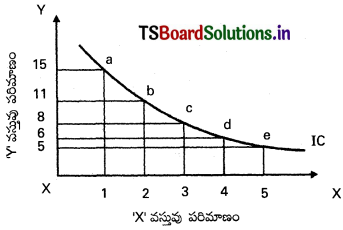
ఉదాసీనత వక్రరేఖల లక్షణాలు :
- ఉదాసీనత వక్రరేఖలు ఋణాత్మక వాలు కలిగి ఉంటాయి. అనగా ఎడమ నుండి కుడికి దిగువకు వాలుతాయి.
- ఉదాసీనత వక్రరేఖలు X- అక్షమునుగాని, Y – అక్షమునుగాని తాకవు.
- ఉదాసీనత వక్రరేఖలు పరస్పరం ఖండించుకొనవు.
- ఇవి మూలబిందువుకు కుంభాకారంలో ఉంటాయి. దీనికి కారణం ప్రతిస్థాపనోపాంత రేటు క్షీణించటం.
- ఎక్కువ స్థాయిలో ఉన్న ఉదాసీనత రేఖ ఎక్కువ సంతృప్తి, తక్కువ స్థాయిలో ఉన్న రేఖ తక్కువ సంతృప్తి స్థాయిని సూచిస్తాయి.
- పూర్తి ప్రత్యామ్నాయ వస్తువుల విషయంలో సరళరేఖలుగానూ, పూరక వస్తువుల విషయంలో ‘L’ ఆకారంలో ఉదాసీనత వక్రరేఖలు ఉంటాయి.

ప్రశ్న 9.
ధర రేఖ లేదా బడ్జెట్ రేఖ అనగానేమి ?
జవాబు.
వినియోగదారుని కొనుగోలు ముఖ్యంగా రెండు అంశాలపై ఆధారపడి ఉంటుంది. అవి :
- వినియోగదారుని ద్రవ్య ఆదాయం
- కొనుగోలు చేయాలనుకుంటున్న రెండు వస్తువుల ధరలు
ఒక వినియోగదారుడు కొనుగోలు చేసే రెండు వస్తువుల ధరలు, ఆదాయాలు స్థిరంగా ఉండి, ఏ సముదాయాలలో రెండు వస్తువులను కొనుగోలు చేయగలుగుతాడో తెలియజేసే రేఖని బడ్జెట్ రేఖ లేదా ధర రేఖ అంటారు. దీనిని ఈ క్రింది ఉదాహరణ ద్వారా వివరించవచ్చు.
వినియోగదారుని ఆదాయం 75/-, X, Y వస్తువుల ధరలు వరుసగా కౌ 10.50 పై. అనుకుందాం. దీంతో వినియోగదారుడు కొనుగోలు చేయగలిగిన రెండు వస్తువుల వివిధ సముదాయాలు ఈ క్రింది విధంగా ఉంటాయి.

వినియోగదారుడు మొత్తం ఆదాయాన్ని ‘X’ పైనే ఖర్చు చేస్తే 5X వస్తువులను మాత్రమే కొనుగోలు చేయగలుగుతాడు, “Y” వస్తువులను కొనుగోలు చేయలేడు. Y వస్తువు మీద పూర్తిగా ఖర్చు చేస్తే 10 ‘Y’ లను, ‘0’ ‘X’ లను పొందగలుగుతాడు.
ఈ విధంగా రెండు వస్తువుల ధరలు స్థిరంగా ఉన్నప్పుడు తాను స్థిరమైన ఆదాయంతో కొనుగోలు చేయగలిగిన రెండు వస్తువుల వివిధ సముదాయాలకు సంబంధించిన బిందువులను కలిపినట్లయితే బడ్జెట్ రేఖ వస్తుంది. ఈ రేఖ వాలు రెండు వస్తువుల ధరల నిష్పత్తిని తెలుపుతుంది. దీనిని క్రింది రేఖాపటం ద్వారా చూపించవచ్చు.
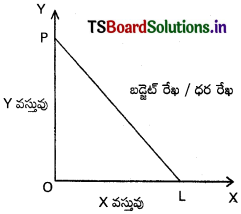
పై రేఖాపటంలో ‘X’ వస్తువు X – అక్షంపై, ‘Y’ వస్తువు Y – అక్షంపై చూపించటం జరిగింది. PL అనేది బడ్జెట్ రేఖ. ఈ రేఖ వాలు XY వస్తువుల సాపేక్ష ధరల నిష్పత్తిని తెలియజేయును. ఏ ఆదాయ పరిమితికి లోబడి వినియోగదారుడు XY లను కొనుగోలు చేస్తున్నాడో బడ్జెట్ రేఖ తెలియజేయును. వినియోగదారునికి ఈ క్రింది అవకాశాలు ఉన్నాయి.
- వినియోగదారుడు తన వద్దనున్న 5/- ను ‘X’ వస్తువుపై ఖర్చు చేసినట్లయితే ‘5’ X వస్తువులను మాత్రమే కొనుగోలు చేయగలడు. కాని ‘Y’ వస్తువును కొనలేడు.
- వినియోగదారుడు తన వద్ద ఉన్న 75/- లను Y వస్తువుపై ఖర్చు చేసినట్లయితే 10 Y వస్తువును మాత్రమే కొనుగోలు చేయగలడు. కాని ‘X’ వస్తువును కొనలేడు.
- వాస్తవంగా వినియోగదారుడు రెండు వస్తువులను కోరుకుంటాడు కావున రేఖాపటంలో OPL అనేది అతనికి ఉండే అవకాశం తెలియజేయును.
- ‘PL’ బడ్జెట్ రేఖను దాటి వినియోగదారుడు ఒక్క వస్తువును కూడా కొనుగోలు చేయలేడు.

అతిస్వల్ప సమాధాన ప్రశ్నలు:
ప్రశ్న 1.
ప్రయోజనం, భావనను నిర్వచించండి.
జవాబు.
ప్రయోజన భావనను ఆర్థిక తత్వశాస్త్రంలో జీవాన్స్ 1871లో ప్రవేశపెట్టాడు. సాధారణ పరిభాషలో వస్తువు లేదా సేవకు గల “కోరికను సంతృప్తి పరిచగలిగే శక్తిని ప్రయోజనం అంటాం. కాని అర్థశాస్త్ర పరిభాషలో ప్రయోజనం ఒక మానసిక భావన. ప్రయోజనం అంటే ఒక వస్తువును వినియోగిస్తున్నప్పుడు వినియోగదారుడు పొందే సంతృప్తి. ఉపయోగంతో ప్రయోజనానికి ఎలాంటి సంబంధం లేదు.
ప్రయోజనం, ఉపయోగం రెండూ వేరు. ఒక వస్తువు మానవుని కోరికను తీర్చవచ్చు కాని అది ఉపయోగపడకపోవచ్చు. ఉదాహరణకు తాగుబోతు ఆరోగ్యానికి సారాయి హానికరం. కాని అతని కోరికను సంతృప్తి పరుస్తుంది. ఒక వస్తువు ఉపయోగకరమైనను, కాకున్నను అది మానవుని కోరికను సంతృప్తి పరిస్తే దానికి ప్రయోజనం ఉందని అంటారు.
ప్రశ్న 2.
కార్డినల్ ప్రయోజనం, భావనను నిర్వచించండి. .
జవాబు.
ఆల్ఫ్రెడ్ మార్షల్ కార్డినల్ సంఖ్యా పద్ధతి ద్వారా ప్రయోజన విశ్లేషణ చేసాడు. వివిధ వస్తువుల నుంచి పొందే ప్రయోజనాలను యుటిల్స్ అనే ఊహాత్మక యూనిట్స్ ద్వారా కొలవడానికి వీలుంది అని నవ్య సంప్రదాయ ఆర్థికవేత్తలు భావించారు. 1, 2, 3 …….. వంటి సంఖ్యలు కార్డినల్ సంఖ్యలు.
ప్రశ్న 3.
ఆర్డినల్ ప్రయోజనాన్ని వివరించండి.
జవాబు.
హిక్స్, అలెన్ అనేవారు వినియోగదారుని ప్రవర్తనను అధ్యయనం చేయుటలో ఆర్డినల్ ప్రయోజన విశ్లేషణను సమర్థించారు. ఈ విశ్లేషణ ద్వారా ప్రయోజనాన్ని సంఖ్యారూపంలో ఖచ్చితంగా చెప్పటం సాధ్యం కాదు. అయితే వివిధ సముదాయాల నుంచి పొందే వివిధ సంతృప్తి స్థాయిలతో పోల్చి చెప్పటం జరుగుతుంది. 1, 2, 3 అనేవి ఆర్డినల్ సంఖ్యలు.

ప్రశ్న 4.
మొత్తం ప్రయోజనాన్ని వివరించండి.
జవాబు.
ఒక వినియోగదారుడు ఒక వస్తువును వినియోగం చేసేటప్పుడు లభించే మొత్తం తృప్తిని మొత్తం ప్రయోజనం అంటారు.
ఉదా : ఒక యూనిట్ వినియోగం చేసే 20 యుటిల్స్ ప్రయోజనం వచ్చింది, రెండు యూనిట్లు ఉపయోగిస్తే, 35 యుటిల్స్ వస్తే వచ్చే మొత్తం ప్రయోజనం 55 యుటిల్స్ (1 + 2 Utils).
∴ TUx = f(Qx)
ప్రశ్న 5.
ఉపాంత ప్రయోజనం.
జవాబు.
ఒక వినియోగదారుడు అదనంగా ఒక వస్తువు యూనిట్ని వినియోగించినప్పుడు మొత్తం ప్రయోజనంలో వచ్చే మార్పును ఉపాంత ప్రయోజనం అంటారు. దీనిని ఈ క్రింది విధంగా కొలవవచ్చు.
MU = \(\frac{\Delta \mathrm{TU}}{\Delta \mathrm{Q}}\)
∆TU = మొత్తం ప్రయోజనంలో మార్పు
∆Q = వస్తు పరిమాణంలో మార్పు.
ప్రశ్న 6.
ధర రేఖ / బడ్జెట్ రేఖ అంటే ఏమిటి ?
జవాబు.
ఒక వినియోగదారుడు కొనుగోలుచేసే రెండు వస్తువుల ధరలు, ఆదాయాలు స్థిరంగా ఉండి ఏ సముదాయాలలో రెండు వస్తువులను కొనుగోలు చేయగలుగుతాడో తెలియజేసే దానిని బడ్జెట్ రేఖ లేదా ధర రేఖ అని అంటారు.

ప్రశ్న 7.
క్షీణోపాంత ప్రయోజన సూత్రం తెలపండి.
జవాబు.
మానవుల కోరికలు అపరిమితమైనప్పటికీ వినియోగదారుడు ప్రత్యేక కోరికను తీర్చుకోగలడు అనే వాస్తవంపైన క్షీణోపాంత ప్రయోజన సూత్రం ఆధారపడింది. ఒక వస్తువును వాడుతుంటే వినియోగదారుని ప్రవర్తన ఎలా ఉంటుందో ఈ సూత్రం విశ్లేషిస్తుంది.
ఒక వస్తువును వినియోగదారుడు క్రమంగా అధిక యూనిట్లను వాడితే వస్తువు అదనపు యూనిట్ల నుంచి లభించే అదనపు ప్రయోజనం క్షీణీస్తూ ఉంటుంది. ఈ మానవ ప్రవర్తన విషయాన్ని ఈ సూత్రం వివరిస్తుంది. ఉపయోగించిన వస్తు పరిమాణానికి, పొందిన ప్రయోజనానికి మధ్యగల సంబంధాన్ని క్షీణోపాంత ప్రయోజన సూత్రం వివరిస్తుంది.
ప్రశ్న 8.
సమోపాంత ప్రయోజన సూత్రాన్ని వివరించండి.
జవాబు.
వినియోగదారునికి స్థిర ఆదాయం ఉండి, వస్తువుల ధరలు స్థిరంగా ఉన్నప్పుడు, వివిధ వస్తువులపై ద్రవ్య వ్యయాన్ని చేసేటప్పుడు, వివిధ రకాల వస్తువులపై ఖరీదు చేసిన చివరి రూపాయిల ఉపాంత ప్రయోజనాలు సమానంగా ఉన్నప్పుడే గరిష్ఠ సంతృప్తిని పొందుతాడు.
ఉపాంత ప్రయోజనాల సమానత్వం వల్ల వినియోగదారుడు గరిష్ట సంతృప్తిని పొంది సమతౌల్యన్ని చేరతాడు. వినియోగదారుని గరిష్ఠ సంతృప్తికి, సమతౌల్యానికి కావలసిన ప్రాథమిక నిబంధనను కింది విధంగా రాయవచ్చు.
\(\frac{\mathrm{MU}_{\mathrm{x}}}{\mathrm{P}_{\mathrm{x}}}=\frac{\mathrm{MU}_{\mathrm{y}}}{\mathrm{P}_{\mathrm{y}}}=\frac{\mathrm{MU}_{\mathrm{z}}}{\mathrm{P}_{\mathrm{z}}}\) = MUm
MUx, MUy, MUz లు వరుసగా X, Y, Z వస్తువుల ఉపాంత ప్రయోజనాలు, MUm ద్రవ్య ఉపాంత ప్రయోజనం; P, P, P లు X, Y, Z వస్తువుల ధరలు.

ప్రశ్న 9.
ఉదాసీన వక్ర రేఖ.
జవాబు.
వినియోగదారుడు కొనుగోలుచేసే రెండు వస్తువుల వివిధ సమ్మేళనాలను తెలియజేసే బిందువులను కలుపగా ఏర్పడే రేఖను “ఉదాసీనత వక్రరేఖ” అని అంటారు. దీనిని ఆర్డినల్ భావనపై ప్రతిపాదించటమైనది.
ప్రశ్న 10.
ప్రతిస్థాపనోపాంత రేటు వివరించండి.
జవాబు.
అన్ని సముదాయాలు ఒకే స్థాయిలో సంతృప్తిని ఇవ్వటం వల్ల వినియోగదారుడు ఒక వస్తువు స్థానంలో మరొక వస్తువును ఏ రేటులో ప్రతిస్థాపన చేస్తున్నాడో దానిని ప్రతిస్థాపనోపాంత రేటు అంటారు. ఈ ప్రతిస్థాపనోపాంత రేటు ఉదాసీనత రేఖ స్వభావాన్ని, వాలును నిర్ణయించును.
ప్రశ్న 11.
ఉదాసీనతా పటం గీయండి.
జవాబు.
X, Y వస్తువుల సముదాయాలు అధిక లేదా అల్ప సంతృప్తిని ఇచ్చే / చూపించే ఉదాసీన వక్ర రేఖలను గీయవచ్చు. వివిధ సంతృప్తి స్థాయిలను తెలిపే ఉదాసీన వక్రరేఖల సముదాయాన్ని ఉదాసీన పటం అంటారు. వినియోగదారునికి వివిధ సంతృప్తి స్థాయిలో తెలిపే ఉదాసీన వక్ర రేఖలతో కూడకున్న పటం.
IC3 మరియు IC2 మీద ఉన్న అన్ని బిందువులు IC1 మీద ఉన్న బిందువుల కంటే ప్రాధాన్యమైనవి. మరొక విధంగా చెప్పాలంటే IC1 ఉదాసీన వక్ర రేఖ IC2 మరియు IC3 ఉదాసీన వక్ర రేఖలతో పోల్చితే తక్కువ స్థాయి సంతృప్తిని చూపిస్తుంది. ఎందుకంటే రెండు వస్తువుల పరిమాణం తక్కువ.
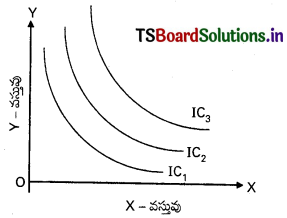

ప్రశ్న 12.
మొత్తం ప్రయోజనం, ఉపాంత ప్రయోజనాల మధ్య సంబంధాన్ని వివరించండి.
జవాబు.
1. మొత్తం ప్రయోజనం :
ఒక వస్తువు వివిధ యూనిట్లను వినియోగించునప్పుడు ఒక వ్యక్తి పొందే మొత్తం సంతృప్తిని మొత్తం ప్రయోజనం అంటారు. వినియోగదారుడు 3 ఆపిల్స్ను వినియోగించాడనుకుంటే మొదటి 20 యూటిల్స్ ప్రయోజనాన్ని, రెండవది 15 యూటిల్స్న, మూడవది 10 యూటిల్స్ ప్రయోజనాన్ని ఇస్తే ఈ ప్రయోజనాలను కలిపితే మొత్తం ప్రయోజనం వస్తుంది.
అంటే 20 + 15 + 10 = 45. వినియోగ పరిమాణం పెరిగితే మొత్తం ప్రయోజనం క్షీణిస్తున్న రేటులో పెరుగుతుంది. మొత్తం ప్రయోజనం మొత్తం వస్తువు పరిమాణంపైన ఆధారపడి ఉంటుంది.
TUn = f(Qn)
ఇచ్చట, TUn = n వస్తువు మొత్తం ప్రయోజనం, f = ప్రమేయ సంబంధం, Qn = n వస్తువు పరిమాణం.
2. ఉపాంత ప్రయోజనం :
అదనంగా ఒక వస్తువును ఉపయోగించినప్పుడు మొత్తం ప్రయోజనానికి అదనంగా చేర్చిన ప్రయోజనాన్ని ఉపాంత ప్రయోజనం అంటారు. ఒక ఆపిల్ 20 యూటిల్స్ ప్రయోజనాన్ని, రెండు ఆపిల్స్ 35 యూటిల్స్ ప్రయోజనాన్ని ఇస్తున్నప్పుడు రెండవ ఆపిల్ నుంచి అదనపు ప్రయోజనం 15 యూటిల్స్ అంటే 35 – 20 = 15. దీనిని ఉపాంత ప్రయోజనం అంటారు. దీనిని కింది విధంగా చెప్పవచ్చు.
MUn = TUn – TUn-1
ఇచ్చట, MUn = n వ యూనిట్ ఉపాంత ప్రయోజనం, TUn = ‘n’ యూనిట్లు మొత్తం ప్రయోజనం,
TUn-1 =’n – 1′ యూనిట్ల మొత్తం ప్రయోజనం.
MU2 = TU2 – TU1
= 35 – 20 = 15
ఉపాంత ప్రయోజనాన్ని కింది విధంగా కూడా చెప్పవచ్చు.
MU = \(\frac{\Delta \mathrm{TU}}{\Delta \mathrm{Q}}\)
= మొత్తం ప్రయోజనంలోని మార్పు / వినియోగ పరిమాణంలోని మార్పు
= \(\frac{15}{1}\) = 15.
వస్తువు వివిధ యూనిట్ల నుంచి వచ్చిన ఉపాంత ప్రయోజనాలను కలిపితే మొత్తం ప్రయోజనం వస్తుంది.

ప్రశ్న 13.
ఉదాసీన వక్రరేఖల లక్షణాలను క్లుప్తంగా వ్రాయండి.
జవాబు.
ఉదాసీన వక్ర రేఖలు కింది లక్షణాలను కలిగి ఉంటాయి.
1. ఉదాసీన వక్ర రేఖ ఎడమ నుంచి కుడికి కిందికి వాలుతుంది.
అంటే ఉదాసీన వక్ర రేఖ రుణాత్మకమైన వాలును కలిగి ఉంటుంది. సముదాయంలోని ఒక వస్తువు పరిమాణాన్ని పెంచితే మరొక వస్తువు పరిమాణం తగ్గుతుంది. రేఖపై ఉన్న ప్రతి బిందువు ఒకే రకమైన సంతృప్తి స్థాయిని ఇవ్వాలంటే ఇది అవసరం. ఉదాసీన వక్ర రేఖ పైకి వాలుతూ ధనాత్మక వాలును కలిగి ఉండదు. అలాగే క్షితిజంగా కాని, ఊర్ధ్వంగా గాని ఉండదు.
2. ఉదాసీన వక్ర రేఖలు మూల బిందువుకు కుంభాకారంగా ఉంటాయి.
ఆ విధంగా ఉన్నప్పుడే ప్రతిస్థాపనోపాంత రేటు క్షీణిస్తుంది. మూల బిందువుకు పూటాకారంగా ఉదాసీన వక్ర రేఖ ఉండదు.
3. ఉదాసీన వక్ర రేఖలు ఎప్పుడూ పరస్పరం ఖండించుకోవు.
ఒకవేళ రెండు ఉదాసీన వక్ర రేఖలు ఖండించుకొంటే ఒక ఉదాసీన వక్ర రేఖ రెండు స్థాయిల సంతృప్తిని చూపిస్తుంది. ఇది సరికాదు.
4. దిగువ ఉదాసీన వక్ర రేఖ కంటే ఎగువ ఉదాసీన వక్ర రేఖ అధిక సంతృప్తినిస్తుంది.
అంటే ఒక ఉదాసీన రేఖకు కుడివైపున ఉండే ఉదాసీన వక్ర రేఖ అధిక సంతృప్తిని తెలుపుతుంది. ఎందుకంటే ఎగువ ఉదాసీనత వక్ర రేఖ పైన ఉండే వస్తువు సముదాయంలో ఏదో ఒక వస్తువు లేదా రెండు వస్తువులు అధిక పరిమాణంలో ఉంటాయి.
![]()
![]()
![]()
![]()

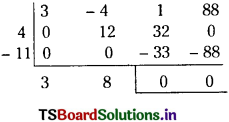

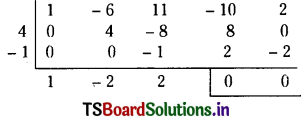

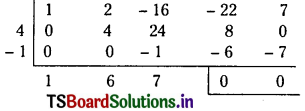

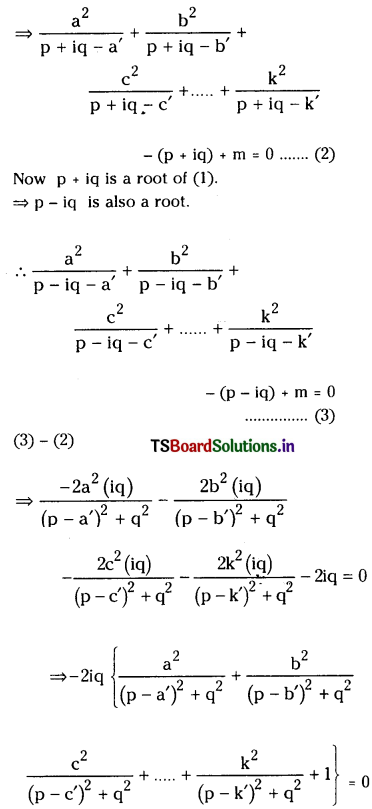
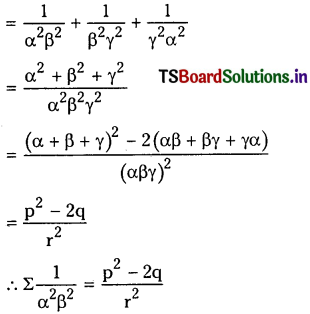
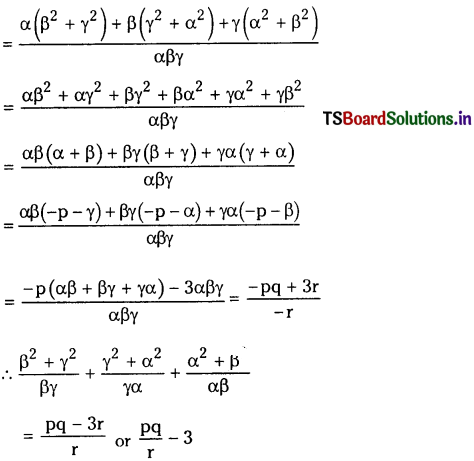






 The given picture explains
The given picture explains What type of joint is located in the skull?
What type of joint is located in the skull?













